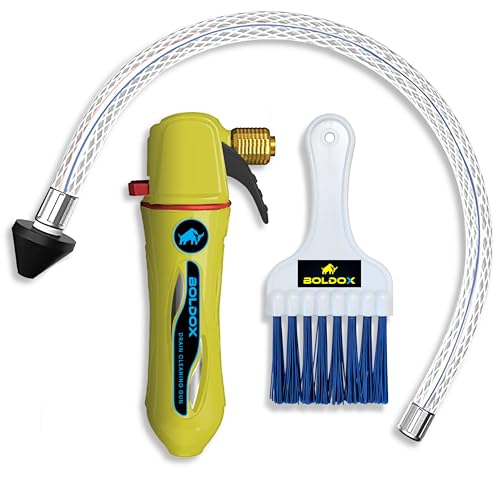


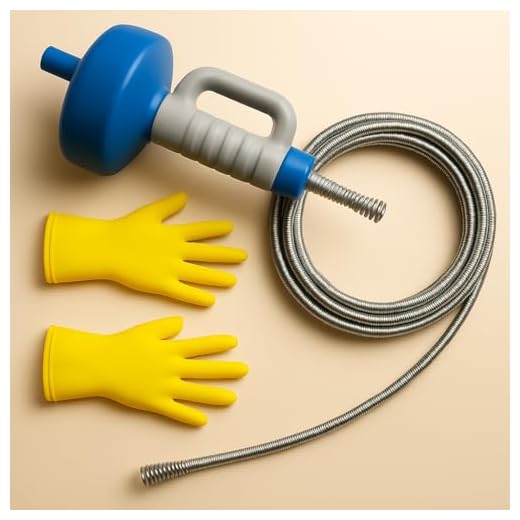

Have you ever walked into your bathroom after not using it for a while only to be greeted by a foul smell similar to that of a sewer? If so, you are not alone. Many homeowners experience this unpleasant odor in their unused bathrooms, and it can be quite frustrating to try and eliminate it.
The main cause of an unused bathroom smelling like a sewer is often due to a dried-out P-trap. The P-trap is a U-shaped pipe underneath your sink or shower drain that holds water to prevent sewer gases from entering your home. When a bathroom goes unused for an extended period of time, the water in the P-trap evaporates, allowing the sewer gases to escape and create a strong odor.
To solve this problem and get rid of the smell, simply run water down the drain to refill the P-trap. This will create a barrier between your bathroom and the sewer system, effectively blocking the odor from entering your home. Additionally, you can try pouring a mixture of vinegar and baking soda down the drain to further eliminate any lingering smells.
In some cases, the smell may persist even after refilling the P-trap and using natural cleaners. This could be a sign of a more serious plumbing issue, such as a broken or damaged sewer line. If this is the case, it is advisable to contact a professional plumber who can assess the situation and recommend the appropriate repairs.
In conclusion, if you have an unused bathroom that smells like a sewer, the most likely cause is a dried-out P-trap. Running water down the drain and using natural cleaners can help eliminate the odor. However, if the smell persists, it may be a sign of a more serious plumbing problem that requires professional attention. Don’t let a smelly bathroom ruin your day – take action and get rid of the odor for good!
Causes of an Unused Bathroom Smelling Like a Sewer
When a bathroom that is not regularly used starts to emit a sewer-like smell, it can be quite unpleasant and a sign of a potential problem. Several factors can contribute to the odor, including:
- Dried P-trap: The P-trap is a curved pipe located beneath the sink or shower drain. Its purpose is to hold water, which forms a seal to prevent sewer gases from entering the bathroom. When a bathroom goes unused for an extended period, the water in the P-trap can evaporate, allowing the sewer gases to escape and cause the unpleasant smell.
- Blocked or damaged vent pipe: The vent pipe is responsible for allowing air to circulate in the plumbing system, preventing the build-up of pressure and facilitating the removal of sewer gases. If the vent pipe becomes blocked or damaged, it can prevent proper ventilation, leading to a sewer odor in the bathroom.
- Leaking sewer pipe: A leaking sewer pipe can release sewage gases into the air, causing a foul smell in the bathroom. This can occur due to cracked or damaged pipes or faulty connections.
- Blocked or damaged sewer trap: The sewer trap is a U-shaped pipe located outside the bathroom that is designed to catch debris and prevent sewer gases from entering the house. If the sewer trap gets blocked or damaged, it can result in a sewer odor seeping into the bathroom.
- Poor ventilation: If the bathroom lacks proper ventilation, the air can become stagnant, leading to the accumulation of unpleasant odors. This can be a problem in unused bathrooms that are not regularly aired out.
Identifying the specific cause of the sewer odor is essential in determining the appropriate solution. By inspecting the P-trap, vent pipe, sewer pipes, sewer trap, and ventilation system, you can pinpoint the issue and take the necessary steps to solve the problem and eliminate the unpleasant smell.
Dry Drain Trap
A dry drain trap is one of the common causes of a bathroom smelling like a sewer. The trap is typically a U-shaped pipe located beneath the sink or shower drain. Its purpose is to hold water and create a barrier that prevents sewer gases from entering the room. However, if the trap is dry, it can no longer perform its function effectively, leading to unpleasant odors.
Causes of a dry drain trap:
- The bathroom has not been used for a long time.
- The water level in the trap has evaporated due to infrequent use.
- A leak in the trap or plumbing system is causing the water to drain out.
How to solve the problem of a dry drain trap:
- Run water in the affected drain for a few minutes to refill the trap. This can help create the water seal and prevent sewer gases from escaping.
- Add a small amount of oil to the trap to reduce evaporation. This can be done by pouring a tablespoon of cooking oil or mineral oil down the drain occasionally.
- If there is a leak in the trap, have it repaired or replaced by a professional plumber. This will ensure that the water stays in the trap and prevents sewer odors from entering the room.
- Regularly use the bathroom to prevent the trap from drying out. Running water or flushing the toilet at least once a week can help maintain the water seal in the trap.
- If the dry drain trap persists despite efforts to fix it, consult a plumber to inspect the plumbing system and identify any underlying issues.
Taking proactive measures to prevent a dry drain trap can help eliminate unpleasant odors and maintain a fresh-smelling bathroom.
Blocked Plumbing Vent Stack
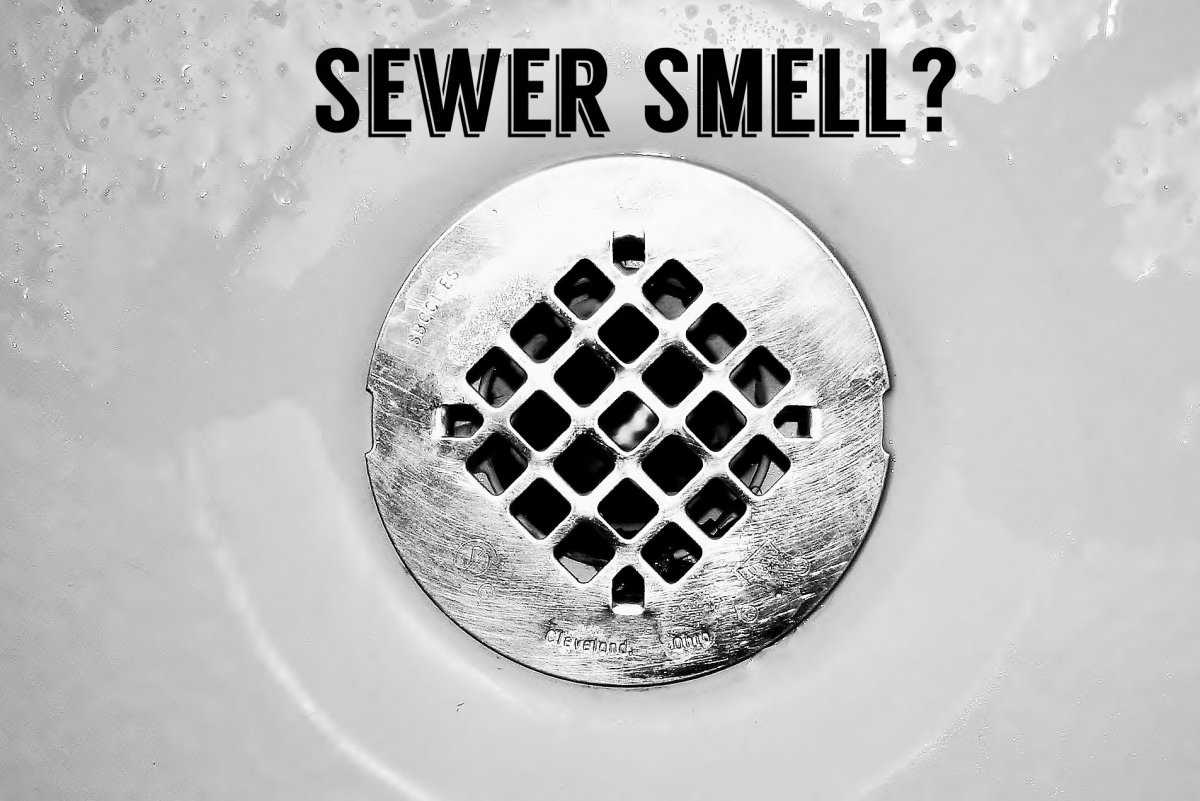
A blocked plumbing vent stack is another common cause of an unused bathroom smelling like a sewer. The plumbing vent stack is a vertical pipe that runs through the roof of a house and allows air to enter the plumbing system, equalizing pressure and preventing unpleasant odors from escaping into the living space.
Symptoms of a Blocked Plumbing Vent Stack
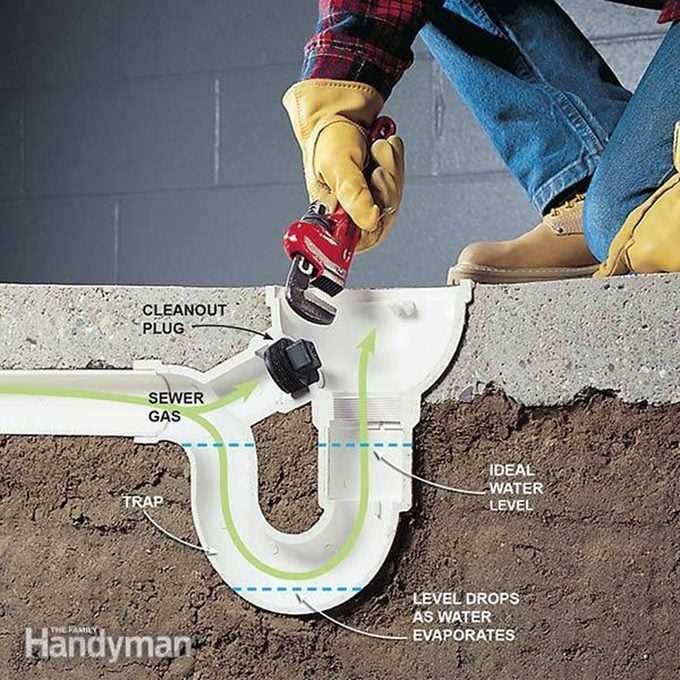
- Strong sewer odor coming from the bathroom
- Gurgling sounds coming from drains or toilets
- Slow draining or backups in multiple drains
Causes of a Blocked Plumbing Vent Stack
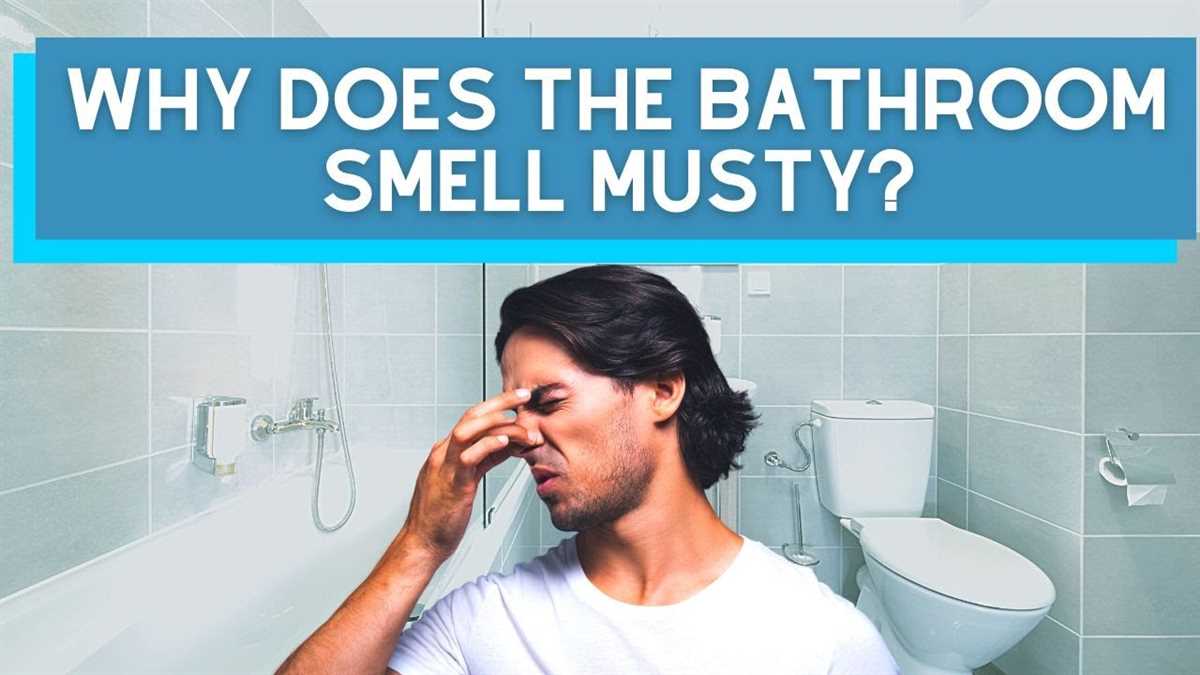
A blocked plumbing vent stack can be caused by a variety of things, including:
- Debris, such as leaves or animal nests, blocking the opening of the vent stack
- Build-up of dirt, leaves, or other debris inside the pipe
- Frozen vent stack during cold weather
- An obstruction, such as a bird or small animal, lodged inside the pipe
How to Solve a Blocked Plumbing Vent Stack
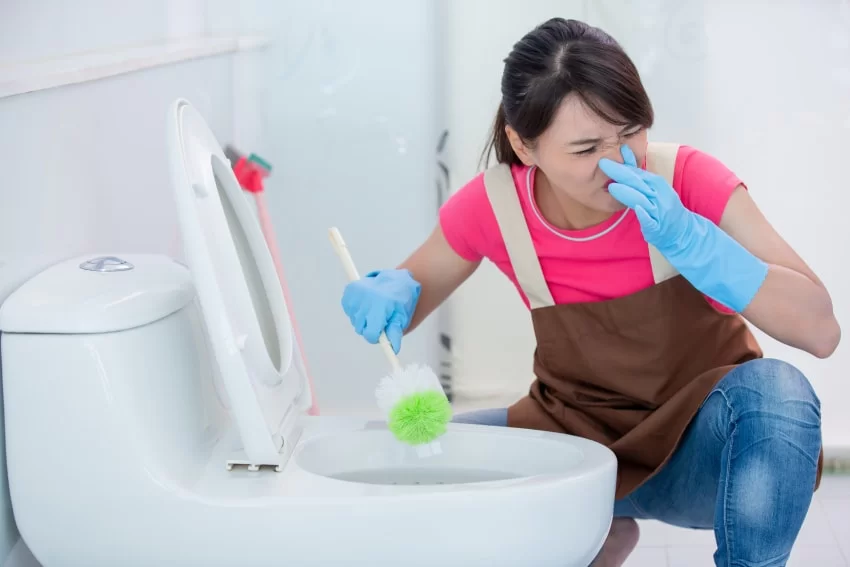
Here are some steps you can take to solve a blocked plumbing vent stack:
- Inspect the vent stack and remove any visible debris or obstructions. Use a ladder and exercise caution when working on the roof.
- If the blockage is not visible, use a plumber’s snake or an auger to remove the obstruction. Insert the snake or auger into the vent stack and rotate it to break up or retrieve the blockage.
- If the plumbing vent stack is frozen, pour warm water down the vent stack to melt the ice. You may need to repeat this process several times or use a hairdryer to accelerate the melting.
- If you are unable to clear the blockage yourself, it is recommended to seek professional help from a plumber.
Clearing a blocked plumbing vent stack can help restore proper airflow and eliminate sewer odors in your unused bathroom. Regular maintenance of the vent stack, such as keeping it free from debris, can help prevent future blockages.
Sewer Line Issues
1. Clogged Sewer Line
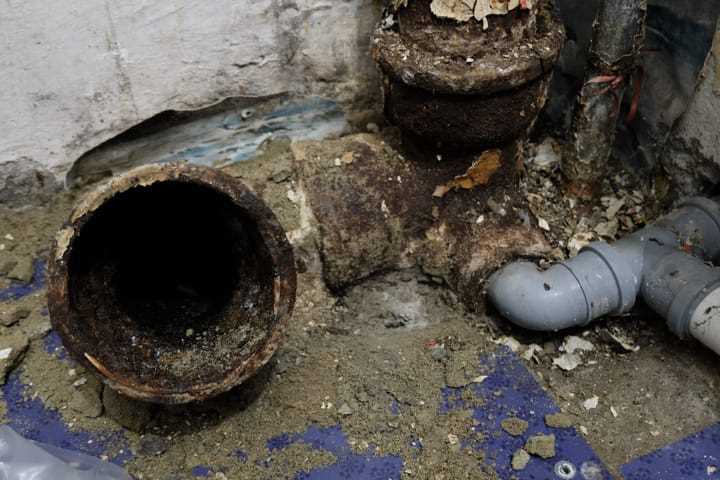
A common cause of a sewer smell in an unused bathroom is a clogged sewer line. Over time, debris, hair, and other materials can accumulate in the sewer line, causing a blockage. This blockage can prevent proper drainage and lead to odors coming back up through the pipes.
To solve this issue, it is necessary to clear the clog in the sewer line. This can often be done using a plumbing snake or auger. Insert the snake into the sewer line and rotate it to break up the blockage. Once the clog is cleared, the sewer smell should dissipate.
2. Damaged Sewer Line
In some cases, the sewer line may be damaged, allowing sewer gases to escape and cause unpleasant odors. Roots from nearby trees, shifting soil, or aging pipes can all lead to cracks or breaks in the sewer line.
If a damaged sewer line is suspected, it is essential to contact a professional plumber to assess and repair the issue. They will be able to inspect the sewer line using special equipment, such as a sewer camera, and determine the best course of action for repair.
3. Improper Ventilation
Poor ventilation is another potential cause of the sewer smell in an unused bathroom. The plumbing system in a house is designed with vent pipes to allow proper air movement and prevent pressure buildup in the pipes. If these vent pipes become blocked or damaged, it can lead to odors escaping into the bathroom.
To resolve this issue, it may be necessary to clean or repair the vent pipes. A plumber can inspect these pipes and remove any blockages, ensuring that the plumbing system has proper ventilation and preventing future sewer smells.
4. Sewer Line Trap Issue

The sewer line trap is a u-shaped pipe located beneath sinks, toilets, and tubs that holds water to prevent sewer gases from entering the bathroom. If the trap is dry or damaged, it can allow odors to escape.
To fix this problem, run water in the unused bathroom fixtures to refill the trap and create a barrier against sewer odors. If the trap is damaged, it may need to be repaired or replaced by a plumber.
5. Sewer Line Maintenance
Regular sewer line maintenance can help prevent issues that cause sewer smells in an unused bathroom. This includes avoiding flushing or putting items down the drain that can lead to clogs, such as grease, wipes, or feminine hygiene products. Additionally, scheduling periodic inspections by a plumber can help detect any potential problems early on.
By addressing sewer line issues promptly and maintaining the plumbing system properly, it is possible to prevent the formation of sewer smells in an unused bathroom.
Lack of Ventilation
A common cause of an unused bathroom smelling like a sewer is a lack of ventilation. Bathrooms that are not properly ventilated can trap stagnant air and allow unpleasant odors to linger.
Causes:
- Blocked vents: If the bathroom vents are blocked or clogged, the air cannot circulate properly, leading to the accumulation of foul odors.
- Inadequate airflow: In some cases, bathrooms may not have enough airflow due to the absence of windows or improper placement of ventilation systems.
Solutions:
- Check and clean vents: Regularly inspect the bathroom vents to ensure they are clear of any debris or obstructions. Clean them if necessary to ensure sufficient airflow.
- Install a ventilation fan: If your bathroom does not have a ventilation fan, consider installing one. A ventilation fan helps to remove moisture and odors from the bathroom by pushing them outside.
- Open windows or use a dehumidifier: If possible, open windows in the bathroom to improve airflow. Alternatively, you can use a dehumidifier to reduce moisture and prevent odors from accumulating.
- Use air fresheners or essential oils: To mask any remaining odors, you can use air fresheners or essential oils to create a pleasant scent in the bathroom.
By addressing the lack of ventilation in your unused bathroom, you can eliminate the sewer-like smell and maintain a fresh and clean environment.
Mold or Mildew Growth
Mold or mildew growth is a common cause of unpleasant odors in unused bathrooms. Mold and mildew thrive in environments with high humidity and poor ventilation, making bathrooms an ideal breeding ground for them. If you detect a musty smell coming from your unused bathroom, it is likely due to mold or mildew growth.
Causes:

- Humidity: Bathrooms tend to have high humidity levels due to steam from hot showers and baths. If the bathroom is not regularly ventilated, the excess moisture can create the perfect conditions for mold and mildew to grow.
- Poor ventilation: Inadequate airflow in the bathroom can contribute to mold and mildew growth. Without proper ventilation, the damp air gets trapped, allowing mold spores to settle and grow on surfaces.
- Leaky pipes: Plumbing leaks can introduce moisture into the walls or floors, providing a nurturing environment for mold and mildew to thrive.
- Inadequate cleaning: Neglected bathrooms that are not regularly cleaned and disinfected are more likely to develop mold and mildew problems.
Solutions:
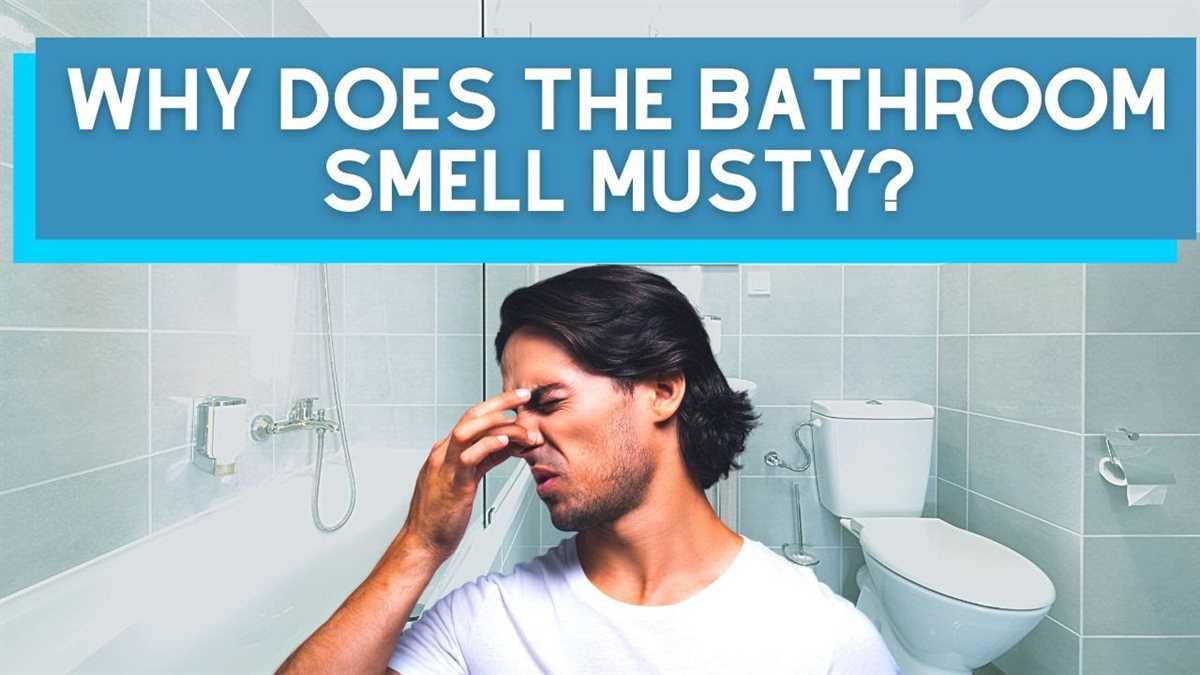
To eliminate mold or mildew growth and eliminate the unpleasant smell, you can take the following steps:
- Improve ventilation: Ensure your bathroom has adequate ventilation, such as an exhaust fan or opening windows while using the shower. This will help reduce humidity and prevent the growth of mold and mildew.
- Fix leaks: If you notice any leaks in your bathroom, address them promptly. Repairing plumbing issues will prevent excess moisture from accumulating and creating a favorable environment for mold and mildew.
- Clean regularly: Regular cleaning and disinfection will help prevent mold and mildew growth. Use mold-resistant cleaning products and scrub surfaces, especially those prone to moisture accumulation.
- Remove existing mold or mildew: If mold or mildew has already developed, use a mildew remover or a mixture of water and vinegar to clean the affected areas. Wear protective gloves and a mask to avoid direct contact with the spores.
- Dehumidify the bathroom: Consider using a dehumidifier in your bathroom to remove excess moisture from the air. This can help inhibit the growth of mold and mildew.
By addressing the causes and following these solutions, you can eliminate the smell of mold or mildew in your unused bathroom and create a fresh and inviting space.
FAQ
Why does my unused bathroom smell like a sewer?
There are several causes for this unpleasant smell. One possible reason could be a dry P-trap. The P-trap in your bathroom’s drain pipe is designed to hold water and create a seal to prevent sewer gas from entering the room. If the bathroom is not used frequently, the water in the P-trap can evaporate, allowing the sewer gas to escape and cause the smell. Other reasons could include a blocked or clogged drain, a broken wax seal on the toilet, or a cracked sewer pipe.
How can I get rid of the sewer smell in my unused bathroom?
There are a few steps you can take to eliminate the sewer smell. One option is to pour water down all the drains in the bathroom to refill the P-trap and create a proper seal. Another solution is to use a mixture of baking soda and vinegar to clean the drains and remove any built-up debris. If the smell persists, you may need to check for any leaks or damages in the plumbing system. In some cases, it may be necessary to call a professional plumber to fix the problem.
Are there any home remedies to solve the sewer smell in an unused bathroom?
Yes, there are several home remedies you can try to eliminate the sewer smell. One common method is to pour a mixture of hot water, baking soda, and vinegar down the drains to clean and deodorize them. Another option is to sprinkle some baking soda or borax into the toilet bowl and let it sit for a few hours before flushing. You can also place bowls of white vinegar or activated charcoal in the bathroom to absorb any lingering odors. However, if the problem persists, it is recommended to seek professional help.
Is a sewer smell in an unused bathroom a sign of a serious problem?
A sewer smell in an unused bathroom can indicate a potential issue with the plumbing system. While it may be a minor problem like a dry P-trap or a clogged drain, it could also be a more serious issue such as a cracked sewer pipe. It is important to address the problem promptly to prevent any further damage and ensure the health and safety of your home. If home remedies do not resolve the smell, it is advisable to consult a professional plumber to diagnose and fix the issue.














